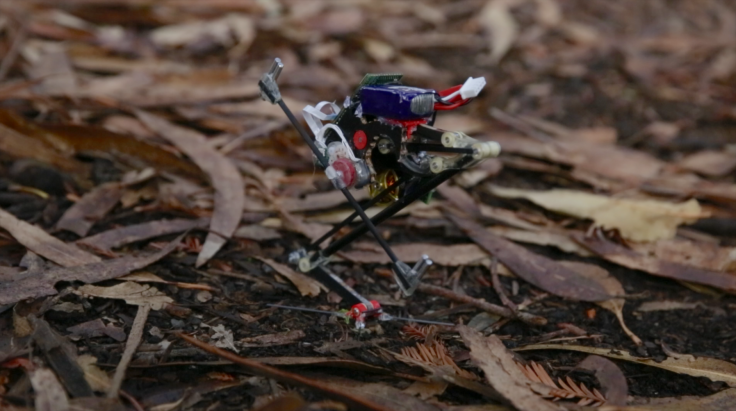Robotics News: Jumping Robot Inspired By African Primate; Bird Flights Show Flaws In Flying Robot Designs

The history of robotics is littered with inspiration from animals. Called biomimicry, it has often been used by scientists to solve complex structural and design problems.
In a new related development, researchers from University of California, Berkeley, designed a small robot, which has “the highest robotic vertical jumping agility ever recorded.” Known as Salto (short for saltatorial locomotion on terrain obstacles), the robot is 10.2 inches tall when fully extended and can jump up to 1 meter (almost 3.3 feet), which is more than three times its full height.
Its development was inspired by galago, a small African primate known for its jumping ability. The galago can jump five times in just four seconds to gain a combined height of almost 28 feet. Like the animal, Salto can also make multiple jumps, by bouncing off walls, and therefore gain height in subsequent jumps.
The researchers designed a new measurement to compare vertical agility by multiplying the height of a single jump by the frequency at which the jumps can be made. The galago shows a vertical jumping agility of 2.24 meters per second, while Salto achieved 78 percent of that at 1.75 meters per second. By comparison, a bullfrog jumps 1.71 meters per second.
“Developing a metric to easily measure vertical agility was key to Salto’s design because it allowed us to rank animals by their jumping agility and then identify a species for inspiration,” Duncan Haldane, a robotics Ph.D. candidate at UC Berkeley and leader of the research, said in a statement. A related study, titled “Robotic vertical jumping agility via series-elastic power modulation,” was published Tuesday in the journal Science Robotics.
In another unrelated study, also in California, researchers at Stanford University studied a small parrot as it “flew through a laser sheet that illuminated nontoxic, micron-sized aerosol particles. As the bird flew through the seeded laser sheet, its wing motion disturbed the particles to generate a detailed record of the vortices created by the flight.”
Measuring those vortices allowed researchers to study how birds generate lift when flying, information that has ramifications for the design of flying robots and drones. They found that most models commonly used in development of those machines were flawed.
Diana Chin, a graduate student at Stanford and co-author of the study, said in a statement: “The goal of our study was to compare very commonly used models in the literature to figure out how much lift a bird, or other flying animal, generates based off its wake. What we found was that all three models we tried out were very inaccurate because they make assumptions that aren’t necessarily true.”
David Lentink, leader of the lab that carried out the study and a co-author, said: “Now, we’ve shown that the equations that people have used are not as reliable as the community hoped they were. We need new studies, new methods to really inform this design process much more reliably.”
The parrotlet, called Obi, was not harmed in the study. Titled “Lift calculations based on accepted wake models for animal flight are inconsistent and sensitive to vortex dynamics,” the study was published Tuesday in the journal Bioinspiration & Biomimetics.
© Copyright IBTimes 2025. All rights reserved.





















